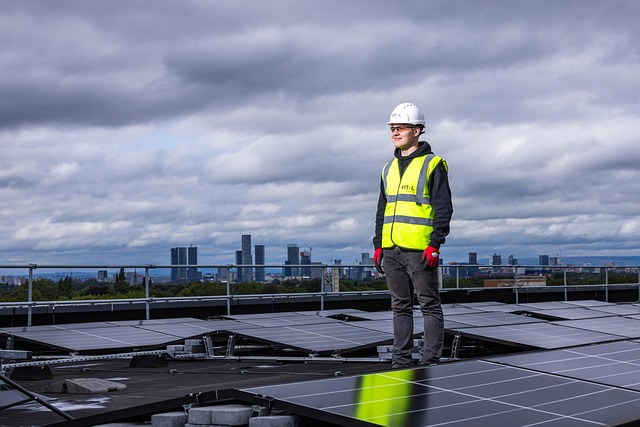Urban green renewal has become the pulse of modern cities, breathing life into concrete corridors and transforming neglected rooftops into lush, fragrant gardens. This movement, driven by a growing awareness of environmental stewardship, brings together horticulture, ecology, and community engagement. In the heart of metropolitan landscapes, where skylines dominate, the gentle sway of flowers and the quiet hum of pollinators remind us that nature can thrive alongside steel and glass.
Why Urban Green Renewal Matters
When city planners first embraced green renewal, they envisioned a healthier, more vibrant urban environment. Today, the benefits are clearer than ever: improved air quality, reduced heat islands, enhanced mental well‑being, and stronger local ecosystems. Urban green renewal is not merely an aesthetic choice; it is a vital strategy for resilience against climate change, offering cities a natural buffer against flooding and storm surges.
- Improved air purification through plant uptake of pollutants.
- Heat island mitigation via increased evapotranspiration.
- Enhanced biodiversity by providing habitats for pollinators.
- Community cohesion through shared gardening spaces.
Flowering Champions of the City
Flowers, with their vibrant colors and delicate fragrances, become ambassadors of hope within the urban jungle. They act as beacons for bees, butterflies, and birds, creating a ripple effect that benefits the entire ecological web. Urban green renewal often prioritizes native species, which are adapted to local climates and require less maintenance, fostering a self‑sustaining ecosystem.
“In every petal that unfurls, the city whispers a promise of renewal.” – Anonymous City Gardener
Design Principles for Urban Eco Gardens
Crafting a successful urban garden involves a blend of science, art, and practicality. Designers and community members collaborate to select plant palettes that reflect the local climate while meeting the needs of urban wildlife. The following principles guide the creation of resilient and beautiful spaces.
- Site Assessment: Evaluate light exposure, soil conditions, and drainage to match plant requirements.
- Water Management: Incorporate rain barrels, permeable paving, and native plants that thrive on natural rainfall.
- Material Selection: Use recycled or locally sourced materials to minimize carbon footprints.
- Accessibility: Ensure pathways and seating are inclusive, inviting all residents to engage.
- Maintenance Planning: Design with low-maintenance species and community stewardship in mind.
Success Stories from Around the World
Across the globe, cities have embraced urban green renewal with innovative projects that blend culture and ecology. In Singapore, the Gardens by the Bay showcases towering vertical gardens, while New York’s High Line has transformed an abandoned rail line into a flourishing urban park. Each initiative reflects a unique cultural context yet shares a common goal: to weave nature seamlessly into city life.
Community Participation: The Human Element
At its core, urban green renewal is a community affair. Residents volunteer, learn, and take ownership of green spaces, fostering a sense of belonging. Educational workshops on composting, native plant selection, and pollinator care empower citizens to become stewards of their environment. Such engagement not only improves ecological outcomes but also strengthens social bonds.
Integrating Technology for Sustainable Growth
Modern technology enhances the efficiency of urban green renewal projects. Smart irrigation systems, sensor‑based soil monitoring, and mobile apps for plant care enable precise management of resources. These tools ensure that water is used judiciously, nutrients are balanced, and plant health is monitored in real time, thereby extending the lifespan of the garden.
Challenges and Opportunities
Despite its benefits, urban green renewal faces obstacles such as limited space, budget constraints, and sometimes resistance from developers prioritizing profit over sustainability. Overcoming these challenges requires policy support, creative financing models, and a cultural shift that values green infrastructure as an investment rather than a cost. The opportunities—enhanced biodiversity, climate resilience, and enriched quality of life—far outweigh the hurdles.
Future Trends in Urban Eco Gardening
Looking ahead, several trends are poised to shape the next wave of urban green renewal. Vertical farming will expand beyond food production to include ornamental plantings. Artificial intelligence will optimize planting schedules and pest management. And citizen‑science initiatives will harness community data to monitor ecosystem health, turning every resident into an active participant in ecological stewardship.
Call to Action: Join the Green Renewal Movement
Every city, no matter its size, can partake in urban green renewal. Whether you have a balcony, a vacant lot, or simply a desire to advocate for greener policies, your contribution matters. Plant native flowers, organize a community garden, or support local environmental organizations. Together, we can transform our urban landscapes into thriving ecosystems that nourish both people and planet.




